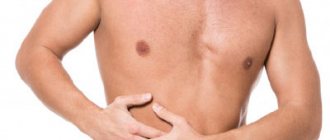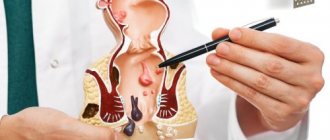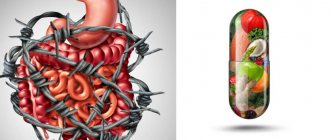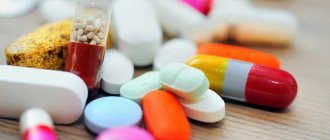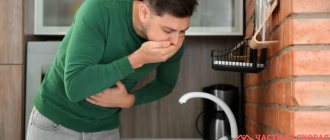restoration of microflora
dyspepsia
indigestion
nausea after eating
Helicobacter pylori
digestive problems
Clinical manifestations of indigestion or dyspepsia are observed in every 2 people. This condition combines a whole complex of symptoms that arise due to structural and functional changes in the gastrointestinal tract. The maximum prevalence of this problem is observed in developed countries. Among women, this condition occurs 1.5 times more often. The peak incidence is considered to be in the age range from 17 to 35 years.
What is peristalsis?
Peristalsis of the gastrointestinal tract (GIT) is the coordinated contraction of its smooth muscles, represented by longitudinal and circular muscle fibers1.
It all starts from the moment a piece of food enters the mouth. Chewing and swallowing trigger the digestive system, including gastrointestinal peristalsis1. When a bolus of food enters the intestine, it stretches its smooth muscles and causes them to respond in the form of contractions1. The coordinated work of the intestinal muscles ensures the mixing of its contents with digestive juices and movement into the underlying sections of the gastrointestinal tract for further “processing” and removal of undigested residues from the body.
Peristalsis is complemented by: rhythmic segmentation, tonic muscle contractions, pendulum-like and propulsive movements of the intestines, which are collectively called motility1.
Intestinal motility is not subject to human will; it is carried out reflexively. The strength and frequency of contractions of the intestinal muscles is influenced by the autonomic nervous system, which regulates the activity of all internal organs. Under the influence of its parasympathetic part, peristalsis increases, the sympathetic nervous system weakens the motor activity of the gastrointestinal tract1.
The digestion process from start to finish normally takes from 1 to 3 days, with most of the time spent moving food through the large intestine1.
Food enters the small intestine 2-3.5 hours after eating1. It takes about a day for the colon to fill and undigested food remains to be removed. Violation of peristalsis leads to a slowdown or acceleration of this process1.
Types of constipation in adults
Constipation can be atonic or spastic, depending on the cause. Atonic constipation occurs due to weakening of the muscles of the intestinal walls and insufficient peristalsis. Figuratively speaking, the intestines do not have enough strength to remove their contents. This problem can develop after abdominal surgery, due to the effects of general anesthesia, as well as with a sedentary lifestyle. Symptoms of the atonic form are dense, profuse stools, painful bowel movements. In the spastic form, intestinal motility is impaired. In some of its areas, muscle spasm occurs, and the intestinal contents cannot move further. A characteristic symptom is hard stool in small lumps. In this case, swelling may occur. The patient has a feeling that the intestines are not completely emptied.
Intestinal motility disorders
Gastrointestinal motility depends on the nature and diet, level of physical activity, psycho-emotional status, general health and diseases that can affect the functioning of the digestive system1,2. Under the influence of these factors, peristalsis can be inhibited or activated, which in its extreme manifestations can lead to constipation or diarrhea3,4.
The reasons for slower peristalsis and constipation may be:
- insufficient consumption of foods containing fiber, in particular vegetables and fruits, herbs, “coarse” cereals and whole grain flour products.
- low fluid intake, which causes a decrease in the volume of intestinal contents and insufficient stimulation of the intestinal muscles;
- diets that involve a sharp reduction in the amount of food consumed, and “piecemeal”, that is, a large number of meals in very small portions;
- sedentary lifestyle and low physical activity, leading to decreased muscle tone of the anterior abdominal wall and insufficient mechanical stimulation of the intestines;
- unfavorable psycho-emotional background: worries, fear, anxiety, stress;
- chronic diseases;
- taking certain medications2.3,5.
In turn, increased intestinal motor activity and diarrhea can be associated with changes in diet, poisoning, including alcohol, infections and taking certain medications, food allergies, psycho-emotional overload, chronic fatigue and chronic stress, which can cause development of IBS. 2.4.
Disturbances in intestinal motor activity lead to the appearance of characteristic symptoms. With constipation, stool becomes rare (less than 3 times a week), accompanied by prolonged straining (more than 25% of the duration of bowel movements) and the release of a small amount of dense, segmented feces2,3,5. With diarrhea, on the contrary, the intestines empty frequently (more than 3 times a day), and the stool becomes liquid.
Violation of gastrointestinal motility leads to discomfort and pain in the abdomen. The processes of digestion, absorption and excretion of metabolic products are hampered. General well-being suffers: weakness appears, fatigue increases, and performance decreases. Intestinal dysbiosis occurs, and along with it, immunity problems6.
The key to successful correction of impaired peristalsis is therapy of the underlying disease. Therefore, in case of prolonged and recurring diarrhea and constipation, you should definitely consult a doctor. Only a specialist can determine the true cause of the problem and prescribe the necessary treatment.
Despite the diversity of causes, there is much in common in the treatment of diseases accompanied by impaired motor activity of the gastrointestinal tract. And first of all, this is diet therapy and lifestyle correction.
Fight constipation
To improve bowel function, it is important to understand the causes of constipation. They can be the result of chronic diseases, eating disorders, a meager amount of fluid drunk per day, etc. Every morning stool is a kind of marker of good intestinal and body health, and a delay in bowel movements of 48 hours or more is considered constipation. Identifying the causes of the violation is the most important activity, which allows you to determine the correct tactics and correction strategy.
There are several general recommendations for improving digestion:
- Try to eat fractionally, in small portions, at the same time. Don't overeat or take long breaks from eating unless necessary.
- Choose steamed, boiled meat, poultry and fish. Limit the consumption of fatty, fried foods, smoked foods, marinades, and spices.
- Include fresh vegetables, seasonal fruits, berries, vegetable oils, and dairy products in your daily diet.
- Minimize the consumption of coffee, strong tea, rice, jelly, crackers.
- Drink at least 1.5 liters of clean water every day. Start your day with a glass of warm water. Do not drink immediately after eating - wait at least an hour.
- Keep a food diary - record symptoms after eating certain foods to find out individual reactions and adjust your diet.
To understand how to normalize the functioning of the gastrointestinal tract in an adult in a particular case and what actions can be taken specifically for you, you need to determine the type of constipation. This information will help when visiting a doctor and will simplify diagnosis.
How to improve intestinal motility?
When drawing up an individual nutrition plan, the doctor takes into account the nature of the disease and peristalsis disorders, the presence or absence of intolerance to certain foods, age and even the patient’s taste preferences. However, there are general recommendations that can be used to speed up or, conversely, slow down intestinal motility.
How to speed up peristalsis during constipation?
In case of sluggish peristalsis, the patient is recommended:
- Fiber-rich foods. It is not broken down in the gastrointestinal tract, but is used as a source of nutrition by intestinal bacteria, adsorbs and retains water, thereby helping to normalize stool consistency2,5.
Contains a large amount of fiber:
- vegetables, especially beets and all types of raw cabbage;
- fruits: apricots, blackberries, kiwis, apples and pears;
- any greens;
- products made from wholemeal flour and whole grains;
- dried fruits such as dried apricots, prunes, figs, dates;
- “coarse” cereals: buckwheat, oatmeal, barley, millet, pearl barley;
- nuts: almonds, pistachios, peanuts (unsalted);
- legumes2.5.
Doctors recommend eating 100-150 g of fiber-rich foods 2-3 times a day2.
- Products containing organic acids: sour milk, yogurt, kefir, acidophilus, sour fruits and berries2.
- Sweets containing mainly simple carbohydrates: honey, marshmallows, marshmallows, marmalade, caramels, preserves and jams, sweeteners, for example, fructose and sorbitol2.
- Salty foods, pickles and marinades; in general, it is allowed to consume up to 12-15 g of salt per day.
- Cold food and drinks2.
- Carbonated mineral water containing carbon dioxide: cold on an empty stomach 1-1.5 hours before meals2.5.
- If there are no contraindications (heart and kidney disease), you need to drink about 1.5-2 liters of liquid per day2.
You need to follow a proper diet, eat 5-6 times a day - this helps maintain normal intestinal motility2.
In addition to nutrition, it is important to maintain a high level of physical activity2,3,5. Afternoon walks in the fresh air act as an intestinal massage and promote the production of hormones that improve the functioning of the gastrointestinal tract5.
How to slow down intestinal motility?
To calm your irritated bowels a little and solve the problem of frequent bowel movements, you need to adhere to the following dietary recommendations:
- Dishes made from carefully ground or pureed products are preferred: lean meat in the form of meatballs, quenelles and soufflés, liquid porridges (rice, Hercules, semolina), potato, vegetable and fruit purees, pureed soups, etc.
- Eliminate foods that cause fermentation and rotting in the intestines: yeast bread and pastries, legumes, grapes, dairy products.
- Avoid products containing essential oils: turnips, radishes, radishes, spinach, onions, garlic, mushrooms, etc.
- All dishes and drinks must be warm (15-600 C).
- Include tannin-rich foods in your diet: strong tea, persimmons, apples, blueberries, cherries, walnuts and cashews. They have an astringent effect and thicken stool2.
For drug correction of peristalsis disorders, traditional medicine uses prokinetics (stimulate contractions of intestinal smooth muscles), antispasmodics that relieve excessive smooth muscle tension, laxatives and antidiarrheals3,4. In each specific case, the doctor selects treatment individually. Among the drugs that help cope with diarrhea, loperamide preparations, including IMODIUM® Express7, occupy a special place. Loperamide has the ability to slow intestinal motility and reduce stool frequency4,5,8. You can use the drug on the recommendation of a doctor from 6 years of age7.
The information in this article is for reference only and does not replace professional advice from a doctor. To make a diagnosis and prescribe treatment, consult a qualified specialist.
Literature
- Tkachenko B.I. Normal human physiology. Textbook for higher educational institutions // Medicine, 2005. - 928 pp., chapter 11.
- Baranovsky Yu. A. Dietetics. Guide for doctors / Peter, 2008. — pp. 465-469.
- Minushkin O. N. Functional constipation: recommendations for diagnosis and treatment // Regular issues of “Breast Cancer”. — No. 11 dated 06/30/2016. - pp. 703-707.
- Cheremushkin S.V., Kucheryavyi Yu.A. Functional diarrhea. Rome criteria IV // Experimental and clinical gastroenterology. — 2022. — issue 139. — No. 3 –– pp. 84-88.
- I. V. Mayev. Chronic constipation // Attending physician. - 2001. - No. 7.
- S. V. Belmer, T. V. Gasilina. Motility disorders of the digestive organs and general principles of their correction // Attending physician. - 2010. - No. 7. - pp. 12-16.
- Instructions for use of the drug IMODIUM® Express.
- Register of medicines in Russia. Active ingredients. Loperamide.
Gastritis: maybe it will go away on its own?
Unfortunately, gastritis is a disease that, once developed, will not give up its conquered positions. If you feel the first signs of the disease (heaviness and pain in the stomach, nausea, belching, heartburn, taste in the mouth, bloating, constipation), immediately make an appointment with a gastroenterologist.
SMC Best Clinic specialists will give you the correct diagnosis at the earliest stage and give detailed advice on how to eat properly and what other steps to take for treatment.
Don't risk your health! Gastritis is the first step on the path to stomach cancer. It's not your choice, is it?
What changes occur in the stomach?
With age, digestion processes in the stomach begin to fade. Atrophic gastritis often develops, and the acidity of gastric juice decreases. The mucous membrane is smoothed out, the ratio of hydrochloric acid and protective factors is disrupted, which opens the gates to infection and other damaging factors. The risk of erosions and peptic ulcers increases. Due to decreased elasticity of the walls, the stomach can accommodate less food.
Cells of the gastric mucosa in old age synthesize less intrinsic factor (Castle), an enzyme that is necessary for the absorption of vitamin B12. This can lead to the development of anemia.
